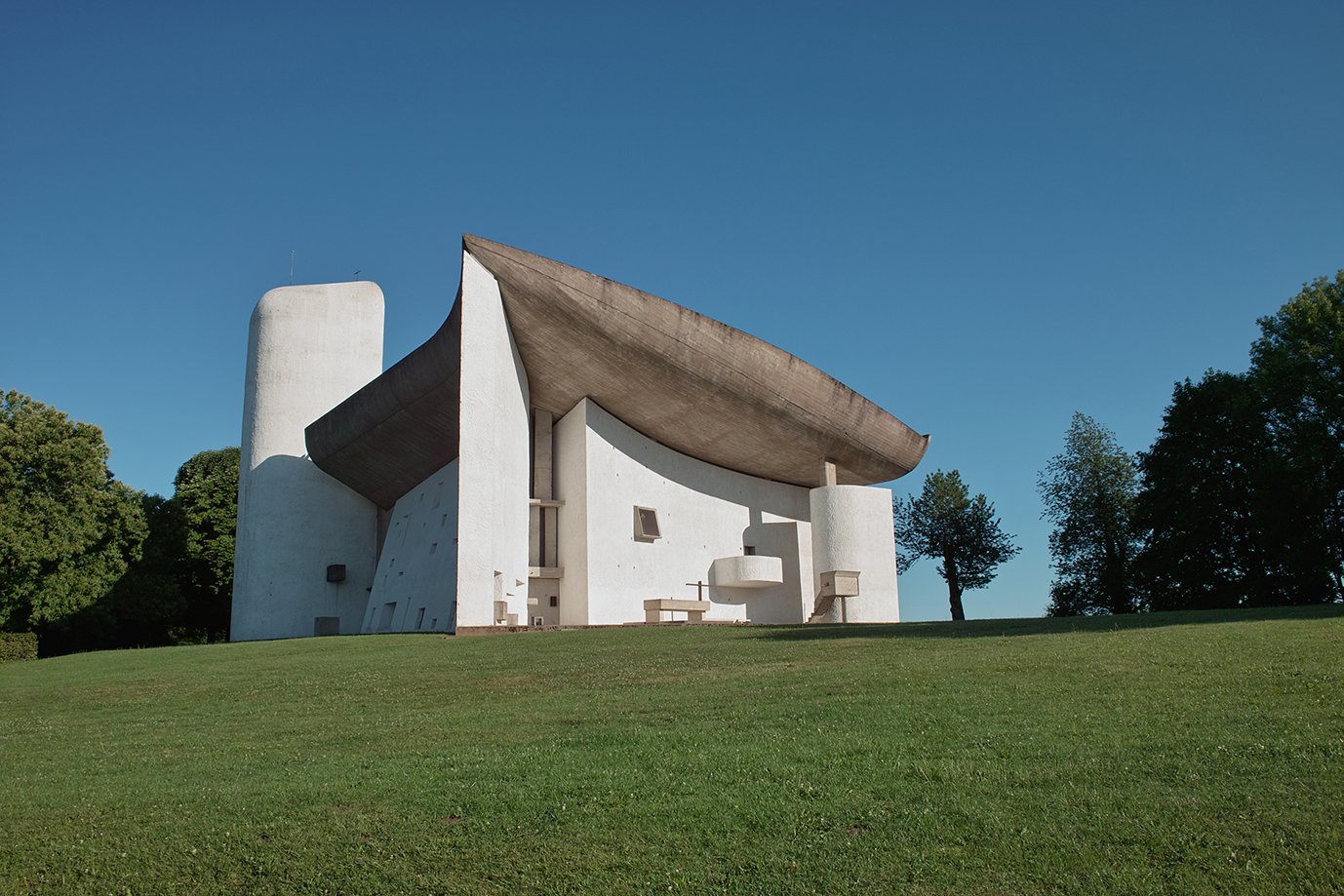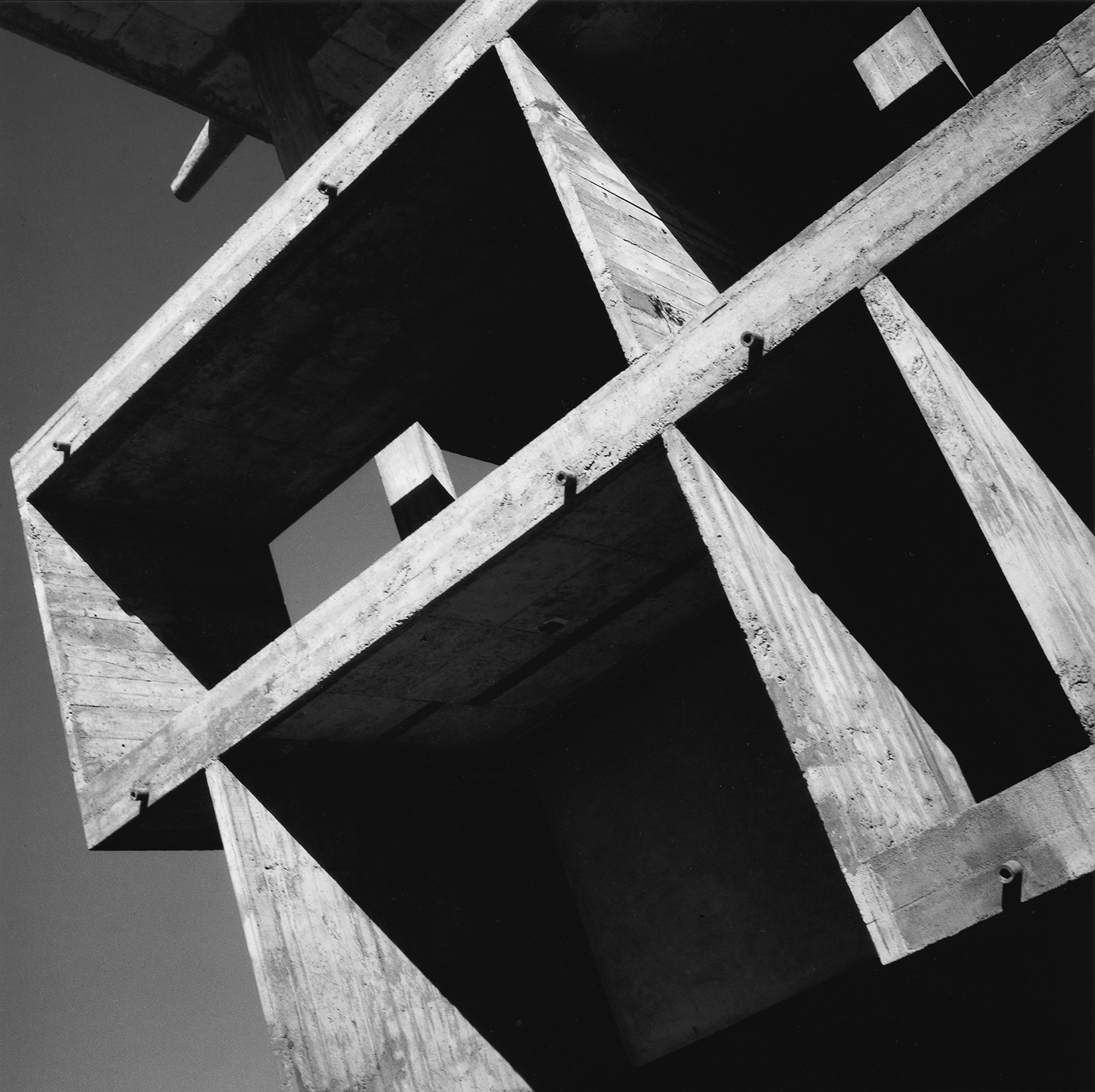LE CORBUSIER: SYNTHESIS OF THE ARTS 1930-1965
HAPPENINGText: Alma Reyes
Le Corbusier approached his architecture and sculptures as “acoustic” with a “visual echo.” He commented, “The action of the work (architecture, statue, or painting) on its surroundings: waves, cries, and shouts… arrows bursting forth like rays, as if triggered by an explosion; the near or distant site is shaken, touched, dominated, or caressed by it.” (Panasonic Shiodome Museum) In the chestnut wood piece The Hands (1952), we see multiple shapes stylized in Cubism, exposing smooth curves and different angles that suggest movement and emotion. The human head above joins with the natural warmth of wood. Le Corbusier believed sculptures emit sounds that entice visitors to listen.

Le Corbusier, The Hands, 1957, The Minoru Mori Collection, Tokyo, Photo: Yasunari Shimoda
One of his most iconic buildings, Chapel of Notre-Dame du Haut (1955) in Ronchamp, France, designated as World Cultural Heritage, exemplifies this concept of acoustic architecture. Three light towers filter natural sunlight into the interior. The floor slopes down the altar according to the land contours. The statue of Mary rotates outward to accommodate open-air masses, and allows the priest’s voice to vibrate through the walls. In turn, energy is pulled within from the exterior surroundings. A scale model is displayed, which scrutinizes the remarkable details more concretely.

Le Corbusier, Chapel of Notre-Dame du Haut. 1950-55, Ronchamp, France. View from south-west, Photo: Yasunari Shimoda
Other outstanding architectural projects, such as The Shodhan House (1951-56) in India, The National Museum of Western Art, Tokyo (1957-1959), also an Important Cultural Property and World Cultural Heritage, Philips Pavilion at the Brussels World Fair (1957-58), and Villa Savoye (1928-31) in France, are represented by photographs and drawings.

Le Corbusier, Detail of the South-West Façade of Villa Shodhan, 1955, Taisei Corporation, Photo: Lucien Hervé
Towards the end of the exhibition, visitors can stop to watch a video installation of Electronic Poem (1958) produced for the Philips Pavilion at the Brussels World Fair. Together with cinematographer Philippe Agostini, designer Jean Petit and composer Edgard Varèse, Le Corbusier embarked on the experiment to fuse architecture, sound, color and video. The projected images, colored lights and abstract forms flutter across the wall surface, evoking the theme of the evolution of humanity in seven chapters. The installation was considered as the master’s most radical actualization of the synthesis of the arts.
Le Corbusier: Synthesis of the Arts 1930-1965
Date: January 11th – March 23rd, 2025
Opening Hours: 10:00 – 18:00 (Open until 20:00 of February 7th, March 7th, 14th, 21st and 22nd)
Closed on Wednesdays (Except of March 19th)
Place: Panasonic Shiodome Museum of Art
Address: 4F, Panasonic Tokyo Shiodome Bldg, 1-5-1 Higashi-Shimbashi, Minato-ku, Tokyo
Tel: +81 (0)50 5541 8600
https://panasonic.co.jp/ew/museum/
Text: Alma Reyes
*This exhibition is produced in collaboration with the Le Corbusier Foundation.





